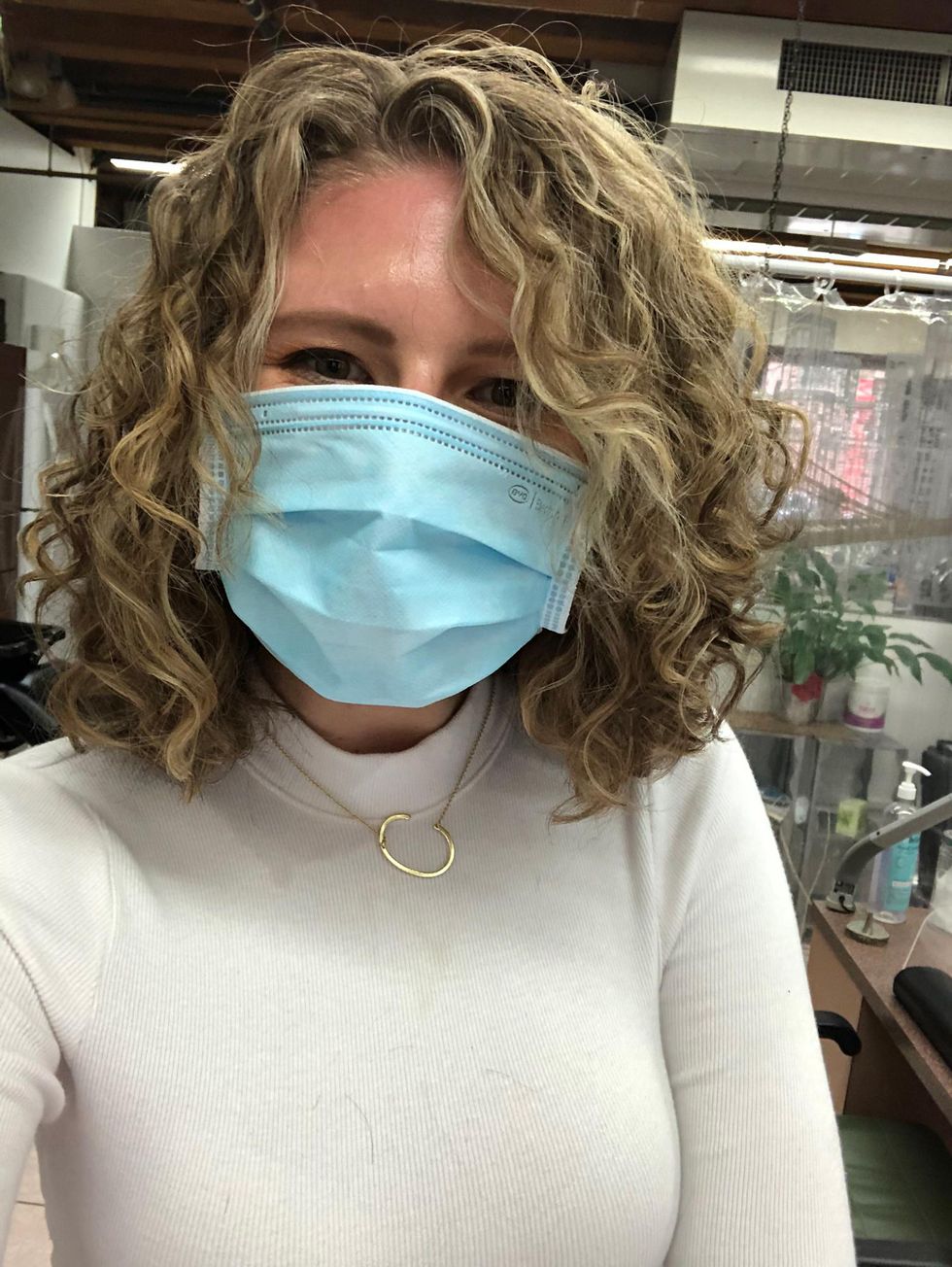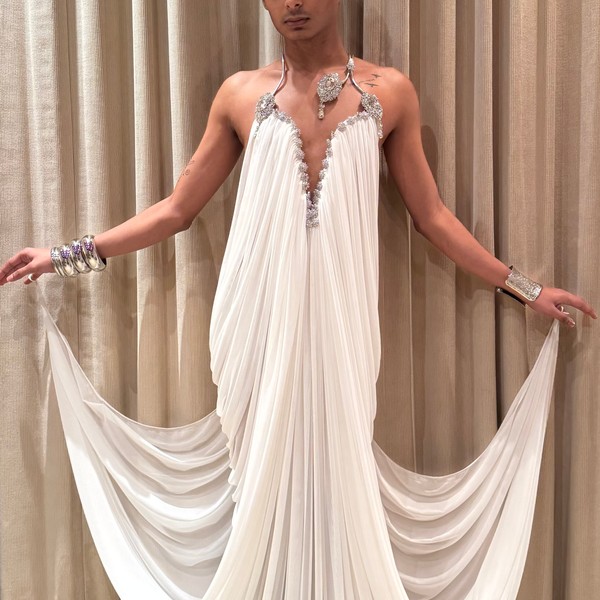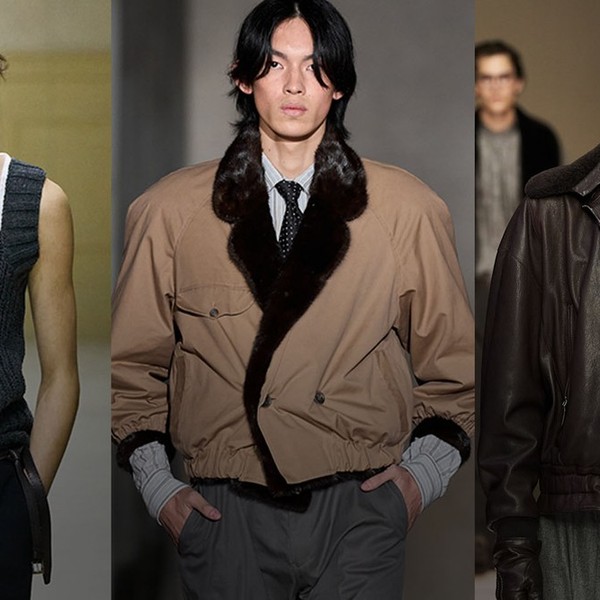How To Highlight Curly Hair: The Pintura Technique, Explained
We speak to three hairstylists for their take.

A few times a year, I find myself I dying for some color to refresh and update my look. This has been my hesitation: as someone with curly hair, I've been taught that if I want to avoid damage and harsh lines on my hair, I have to avoid color treatments.
Let me explain: For those of us with curly hair, traditional foil highlights can be slightly tricky in that they don't always give that natural, sun-kissed look. Oftentimes, lighter streaks might not line up with the curl pattern, leaving a stringy color broken apart within the tendril. That is, until I discovered Pintura, the highlighting technique made specifically for curly hair.
I received the highlighting technique back in April, and it's given me added definition and movement and is growing out more naturally compared to the foil highlights I've received previously. Here's how it works and your go-to guide on how to highlight curly hair with the pintura technique..
Meet The Experts
- Smadar Nadav is a New York City based curl expert and color specialist with experience in various forms of hair coloring and highlighting.
- Antonella DeLuca is an advanced stylist for DevaCurl, a haircare brand for curly hair co-developed with dermatologists.
- Libby Brenner is an Ohio based curly hair specialist and educator. She is the owner of North & Ivy Natural Curl Studio and creates content on Instagram and TikTok showing off her work and educating her audience on curly hair.
Why Is Highlighting Curly Hair Challenging?
"Curly hair is naturally dry and delicate," curly hair specialist Libby Brenner says. "This means it's more prone to damage during the coloring process, as well as during any process involving chemicals." Brenner also notes the shape of the curl itself makes it more difficult to spread the color evenly, but that this shouldn't be a problem with the help of a trusted curl specialist.
What Is The Pintura Highlighting Technique?
Pintura literally means "to paint" and was developed by Denis Da Silva, co-founder of DevaCurl. According to Smadar Nadav, a color specialist at the flagship DevaChan Salon, the coloring technique is very similar to balayage, only the stylist will hand-paint the color onto the curls vertically rather than horizontally.
By doing this, there's greater control over where the color goes, allowing the stylist to follow the natural S of a curl. The benefit is that the color appears more natural in terms of movement on the curls, which creates that sun-kissed look or allows for the stylist to experiment with an ombre look.
"When we are thinking about coloring for curly girls, we want the saturation of color to happen in the mid-length or the ends, where your hair moves," Nadav says. "We don't want the burst of color to sit at your roots."
Rather than using foil to block off the sections, the stylist will use tissues to separate each curl grouping and prevent bleeding of the color, explains Antonella DeLuca, advanced DevaCurl stylist.

During the Pintura process;
Photo: Courtesy of Courtney Campbell
Why Is Pintrua Better For Curly Hair?
By following the natural curl pattern, the Pintura technique allows stylists to actually color the curl, rather than random streaks throughout your head. It looks so much better on curly hair—trust me.
"It adds drama and a pop of color when it's painted directly on the curl, and adds lots of dimension," De Luca says.
Nadav also explains that because people have different curl types, Pintura allows her to better match the highlights to the individual curl. She loves that it gives her more control because she's able to build up the color, which leads to better placement.
The Pintura process also leaves less demarcation compared to foil highlights. Without the harsh lines of color, it looks more natural as the hair grows out, meaning you'll need fewer touch-ups.
"Because we can paint right to the root, it softens as it grows out, which then gives our clients longevity with their color, so they don't have to be in so frequently," Nadav says.
How To Take Care Of Pintura-Treated Hair

After;
Photo: Courtesy of Courtney Campbell
What Is The Difference Between Pintura And Foilayage, And When Might A Stylist Choose Foilayage Over Pintura For Curly Hair?
"The difference between Pintura and Foilyage, is pintura is painting onto the actual curl. It's essentially balayage, but for curly hair," Brenner says. "Foilyage is painting onto hair, but using a foil to back it while painting and then sealing it up."
How Long Does A Pintura Session Typically Take In The Salon?
Brenner note that, in comparison to other highlighting or coloring techniques, pintura might seem like a more tedious and time consuming process. "Pintura is for sure a longer process," she notes. "It can take anywhere from 1-2 hours depending on the client's length, density and overall color goals."
What Is The Average Cost Of Pintura Highlights Compared To Typical Foil Highlights Or Balayage?
While the average prices depends heavily on where your located (with major cities probably having higher prices) and the salon that you select and the level of expertise of the stylist or colorist. "You can expect to pay at least $150 and up," Brenner says.
Does Pintura Work Well On All Curl Types?
"Pintura works well on all curl types, however may not always be the most effective method for the client," Brenner says. "Again, it really depends on the overall look the guest is going for."
What Is The Best Type Of Purple Or Blue Shampoo To Use, And How Often Should It Be Used To Prevent Brassiness?
Brenner highly recommends the Innersense Bright Balance Purple Toning Shampoo. "I recommend using it as needed," she says. "So when you start to notice brassiness, you should grab your pigmented shampoos and conditioners."




